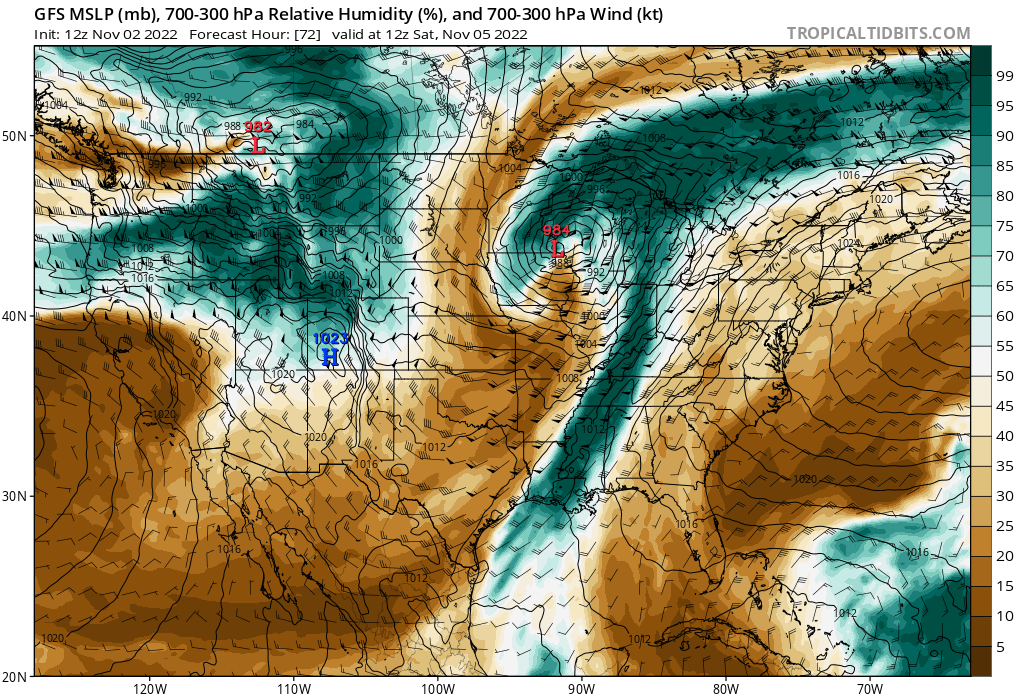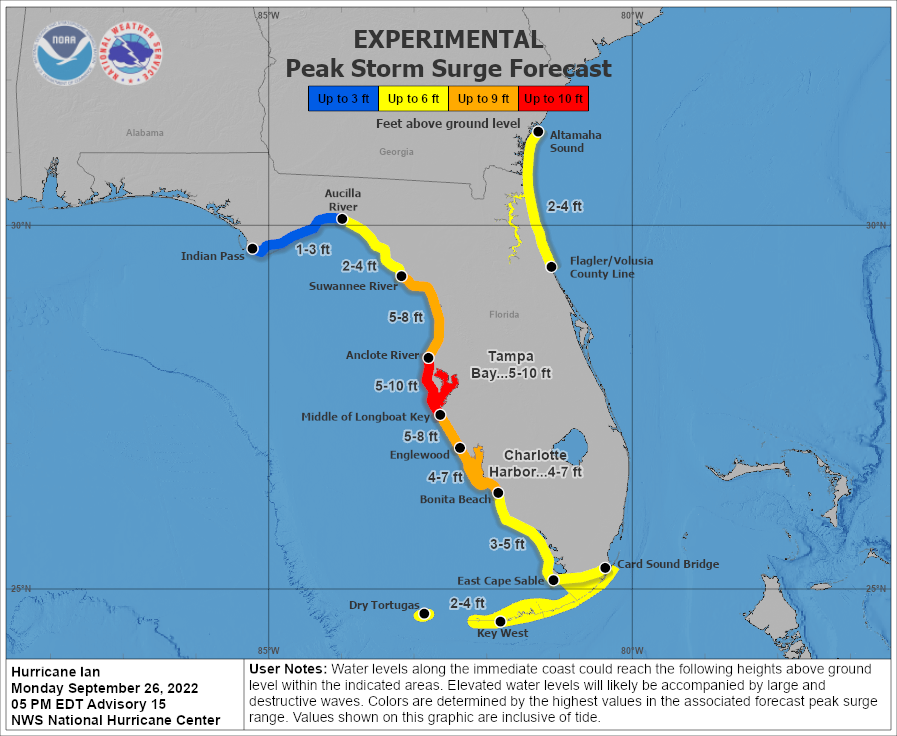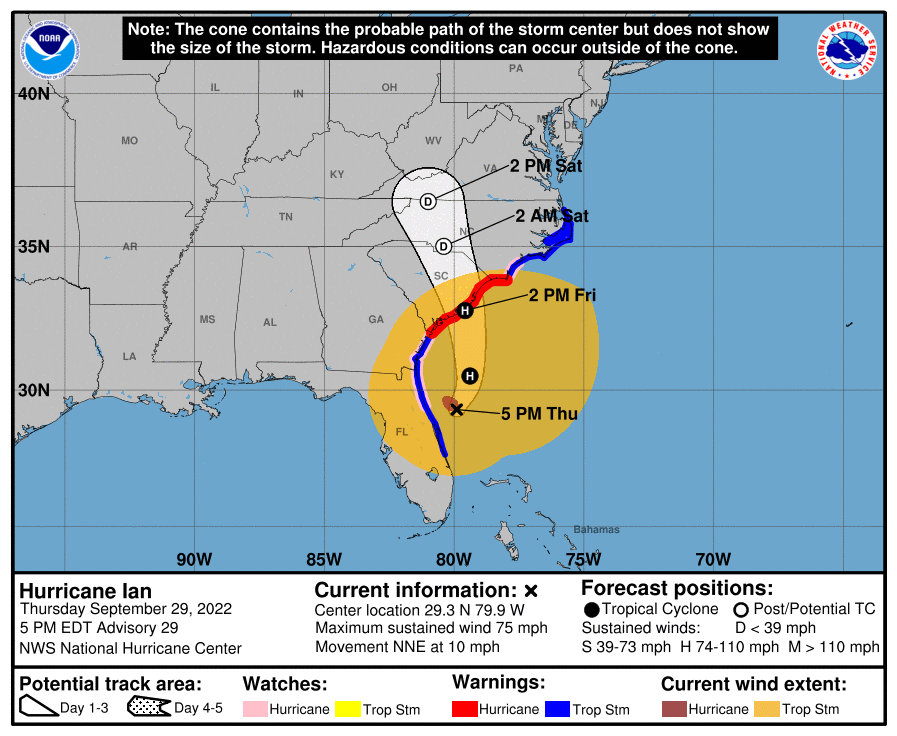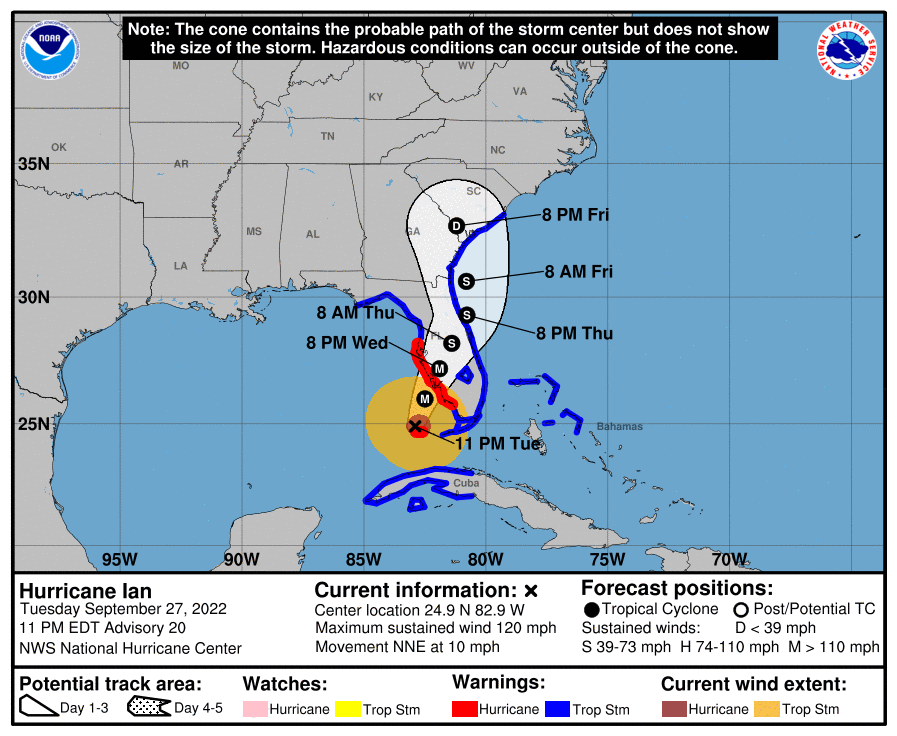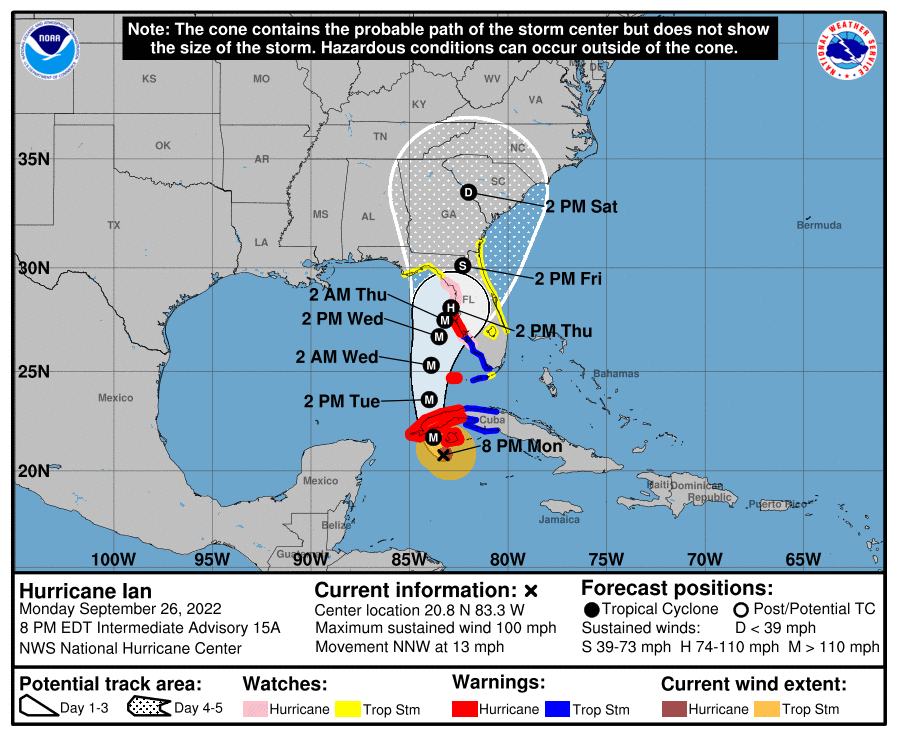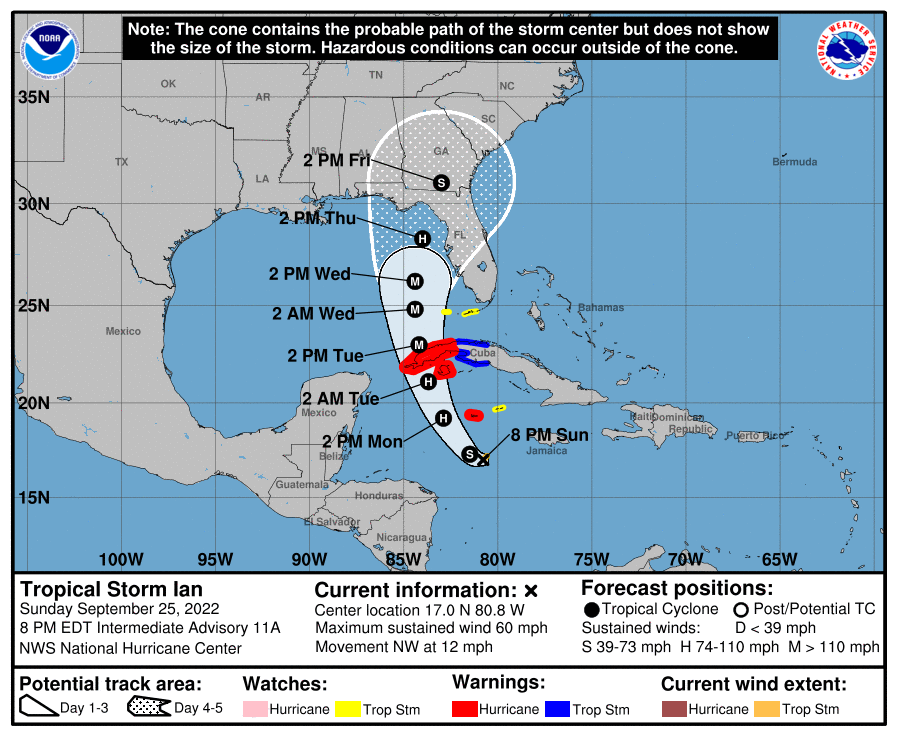Tropical Storm Fiona Needs Watching For The East Coast

It is the middle of September, and no matter how slow the season is to this point, there’s going to be something tropical to watch. In this case, it’s Tropical Storm Fiona, starting it’s approach toward the Greater Antilles. This system has potential to eventually be a threat to the US East Coast, and potentially the Gulf Coast but I think the threat to the Gulf Coast is very low at this point.
Looking at the ensembles, there are two clusters of outcomes, with the out to sea/near east coast being the most popular solution. There is that secondary cluster though, that sends the storm over Hispaniola and keeps it moving west toward Florida or even into the Gulf. Do note, that solution leaves a weaker storm and none of the southern members end up doing much with it.
At this point, I believe the main thing to watch will be exactly how close Tropical Storm Fiona gets to crossing over the spine of Hispaniola. Goes over the big mountains and stays weak? Then Florida and maybe the Gulf Coast need to keep a closer eye. Misses to the north of the bigger mountains? The storm would likely be stronger and catch the weakness between two ridges out to sea.
Today, I want to go through the modeling to show what would cause Fiona to be a problem. Again, the most likely is Fiona missing land all together, but we stay vigilant around here.
Fiona Is Currently Sheared And Tilted

The above gif shows the struggle Fiona is to have in the near term. Shear is ripping convection off the center of the system and pushing it to the NE. You can see that just from the movement of the clouds over the system. Recon data this afternoon, shown below, indicates this shear has caused a lopsided system with all the wind and storms to the NE. Indeed, the center is mostly cloud-free and exposed, with recon placing it to the SW of the blob of convection you see above.
What this means is simple, Fiona will struggle to organize over the short term. For a tropical system to have a shot of evolving beyond a tropical storm, the system needs to be symmetrical around the center with convection and wind all the way around. Until Fiona slows down, and the shear drops some on approach to the islands, I expect pulses of convection without much strengthening to show for it.

Future Track Depends on Strength. Stronger = Farther East

The above gives the general idea of what is going to matter for the track and it’s pretty simple. A stronger storm feels the wind from deeper levels of the atmosphere. In this case, the deeper levels would push Fiona toward the North and eventually to get caught in the mid-latitude flow and swept toward Europe. All of this while getting pulled apart, of course.
Conversely, a “shallower” weaker storm gets far more contribution from the lower-level flow in terms of where it gets steered. As is usual, that flow is going to be pushing things to the west over the Caribbean.
Stronger early and it goes out to sea. Weaker and we have to watch for it to make a much closer approach to the East Coast.
Gap Between Ridges Makes Out To Sea Most Likely Outcome

The story at the synoptic level has been hazy for the past few days, with a Typhoon recurve throwing a bunch of uncertainty into the mix. This is beginning to fade with both the Euro and GFS converging on a similar idea, though the timing differences end up making a difference. The basics are that a heatwave is coming for the Southeast next week as a ridge builds somewhere over the southern central/southeastern part of the country. To the north, a longwave trough over Canada pushes SE toward the NW Atlantic.
This causes the ridge over the Atlantic to weaken and offer an opportunity to the north for Fiona. As this happens, the GFS has a trough move into the western United States and work to erode the Texas ridge going toward the weekend. That would leave the steering wide open for a storm to get out to sea and miss land.
The European model is slower with the trough, and with a weaker Fiona, presents a scenario that would put Fiona much closer to the Florida coastline. Simply put, there is less of a gap to get north with the European scenario and that opportunity shows up later.

tl;dr version
Tropical Storm Fiona is currently out in the open Atlantic, a couple of days from any impacts on the Greater Antilles. The main story for the islands is going to be the rainfall, especially if/when it turns north. For interests in the United States, the East Coast is the most at threat. At this point, it still looks most likely Fiona ends up missing land all together. There is still a chance; however, that a weaker Fiona could end up approaching Florida. For that reason, Fiona needs to be watched over the next week or so.
In the near term, Fiona should remain a sheared tropical storm with winds bouncing between 50-60 mph. The big question on future path concerns the island of Hispaniola. If Fiona goes over or south of the island, this brings US interests into play. If Fiona ends up to the north? Fiona will almost certainly end up “out to sea”.
For now, just follow those NHC updates and I’ll give an update Sunday or Monday. Other than that, enjoy the more pleasant weather this weekend.





